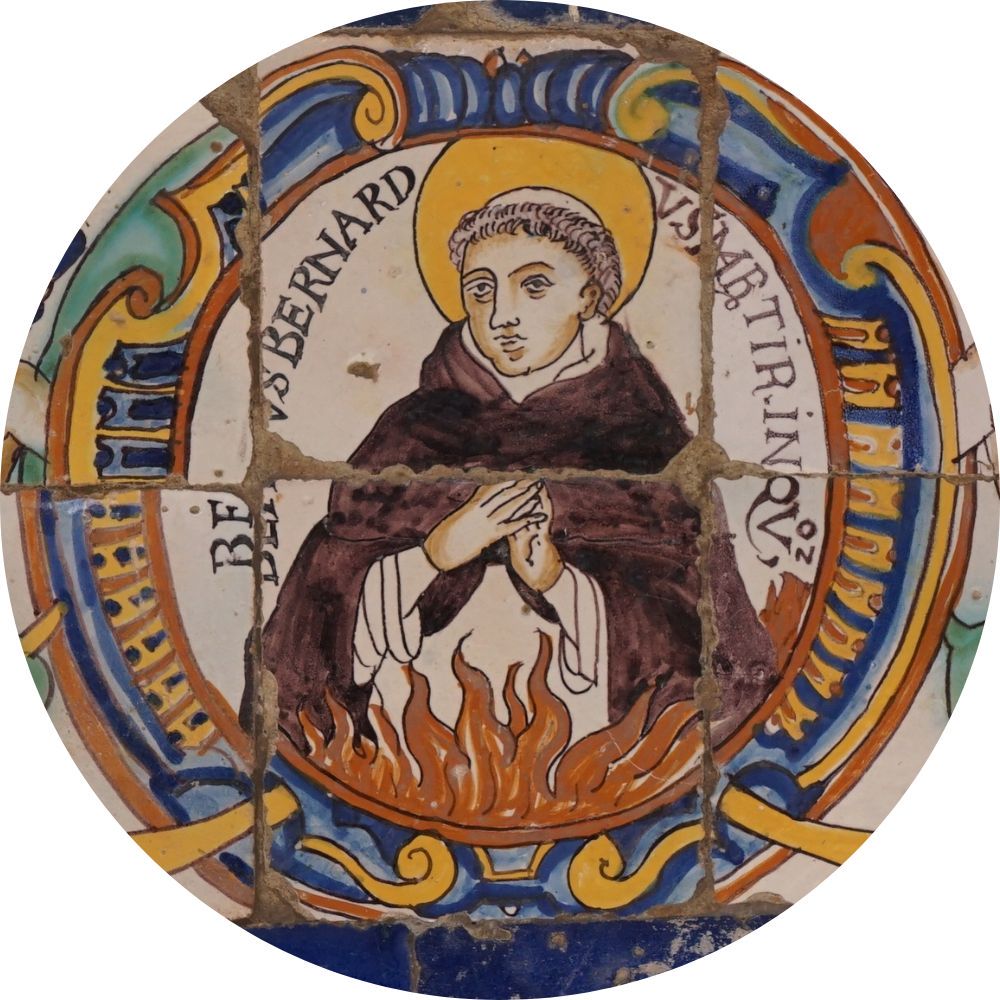Bernard of Travesseres
Bernard of Travesseres
(† 1260)
Bernard was born in the small village of Travesères, located between Urgell and Puycerda on the border of Catalonia and Andorra. He took on the Dominican habit at the former convent of St. Roman in Toulouse. Br. Gerard de Frachet writes of him in Vitae Fratrum that he was an exemplary monk, characterized in perfect obedience, and a good preacher. He desired to preach the Gospel to pagan peoples. However, without being able to go on a mission, he traveled around the cities of Languedoc and preached the Good News of Jesus Christ. He devoted himself wholeheartedly to the ministry, preaching with great anointing, the fruits of which were numerous converts of sinners. He also worked among heretics. Afterwards, he moved to Catalonia, Spain. In the Kingdom of Aragon, he continued to preach the Word of God, converting both heretics and Jews. His pastoral successes drew the attention of the church authorities, who appointed him inquisitor for the Catalan area. In 1260, probably on January 31, he suffered martyrdom near Urgell. According to legends, he was stabbed to death by heretics, after which his body was cut into pieces. He was buried in Urgell Cathedral.
In Vitae Fratrum, Br. Gerard de Frachet also wrote about the miracles that were to take place at his tomb. For example, a demon-possessed girl was suddenly born. Br. Gerard mentions a young girl who was presumed dead, but thanks to her father's prayers to Bl. Bernard she opened her eyes and returned home; about a seriously ill priest who was relieved of a fever; and about another person who suffered from the same illness for two years, but after calling on the blessed martyr, was immediately healed. At various times, 12 blind people, 3 deaf people, 8 lame people, 4 paralyzed people and more than 30 people afflicted with various diseases experienced healing at his tomb.
In Dominican calendars, the commemoration of his martyrdom was celebrated on January 31 or February 1. He is mentioned under January 31, for example, by the Krakow Dominican Michał Siejkowski and Jean Baptiste Fevillet in his Annèe dominicaine, ou les vies des saints, des dienheureux, des martyrs, et des autres personnes illustres ou recommendables paer leur pieté, de l'un & de l'autre Sexe, de l'Ordre des FF. Précherurs, in a volume covering the month of January, and after February 1, the authors of the second volume of the new edition of the Annèe dominicaine, containing saints, blesseds and martyrs whose death commemoration or liturgical memory fell just in the month of February. The latter, along with him name two other inquisitors who were murdered in Urgell in the 13th century: Pontius of Blanes, who was also featured in the ceramic decoration of the San Domingo Monastery in Lima, and Peter of Cadireta.
It is puzzling that he is depicted in the cloister garth of the San Domingo Monastery in Lima in a blaze of fire, which could suggest that he was burned rather than pierced or cut. Hence, it is difficult to say with certainty that it was the one placed in the ceramic decoration. However, it was him as an inquisitor and martyr who enjoyed a cult in the Order of St. Dominic. It is possible that the authors of the decoration had other news about his martyrdom, although it also cannot be ruled out that they had in mind another Dominican inquisitor named Bernard, who died in the flames of fire. An individual with that name who was murdered by Muslims, who then threw his body into a fire, is recalled by Michele Pío. He emphasizes that he was associated with Croatia, where he suffered martyrdom around 1270.
Bibliography:
- Fratris Gerardi de Fracheto O.P. Vitae fratrum ordinis praedicatorum necnon Cronica ordinis ab anno MCCIII usque ad MCCLIV, ed. B.M. Reichert, Lovanii 1896, pp. 301-302.
- Piò Michele, Delle vite de gli huomini illustri di S. Domenico, cz. 1: Que comendiosamente si tratta de i Santi, Beati, e Beate, Potifici, Cardinali, Patriarchi, e Vicecancellieri dell’Ordine di S. Domenico, Bologna 1607, kol. 312-313.
- Diago F., Historia de la Provincia de Aragon de la Orden de Predicadores, [Barcelona 1599], k. 8v-9.
- Siejowski M., Dni roczne Dni Roczne Swiętych, Błogosławionych, Wielebnych y Pobożnych Sług Boskich Zakonu Kaznodzieyskiego, S. Oyca Dominika, Kraków 1743, k. A2.
- Annèe dominicaine, ou les vies des saints, des dienheureux, des martyrs, et des autres personnes illustres ou recommendables paer leur pieté, de l’un & de l’autre Sexe, de l’Ordre des FF. Prêcherurs, Pour tous les jours de l’Annèe, Avecyn Martyrologes. Javnier recueillies, Amiens 1678, pp. 709-710.
- Annee dominicaine ou vies des saints des bienheureux, des martyrs et des autres personnes illustres ou recommandables par leur piété. De l’un et de l’autre sexe de l’Ordre des Frères Prêcheurs distribuées suivant les jours de l'année. Nouvelle édition. Revue et annotée par des religieux du même Ordre. Février, Lyon 1884, pp. 1-9 (reprinted in: Dominicus, Trois inquisiteurs martyrs Pons, Bernard et Pierre, martyrs à Urgel (Espagne), au XIIIe siècle, „Le Sel de la Terre”, 62 (2007), pp. 144-152).
- Lea H.-Ch., A History of the Inquisition of the Middle Ages, vol. 2, New York 1888, s. 167 (French edition: Histoire de l’Inquisition au Moyen-Age, vol. 2: L’inquisition dans les divers pays de la chrétienté, Paris 1901, p. 198).
- Smith D.J., Crusade, Heresy and Inquisition in the Lands of the Crown of Aragon (c. 1167-1276), Leiden-Boston 2010 (The Medieval and Early Modern Iberian World, 39), p. 101.
- Ames C.Ch., Rigtheous Persecution. Inquisition, Dominicans and Christianity in the Medlle Ages, Philadelphia 2009 (The Middle Ages Series), p. 65 (Polish translation: Inkwizycja i Bracia Kaznodzieje. Słuszne prześladowanie, transl. A. Gomola, Poznań 2013, p. 116).

